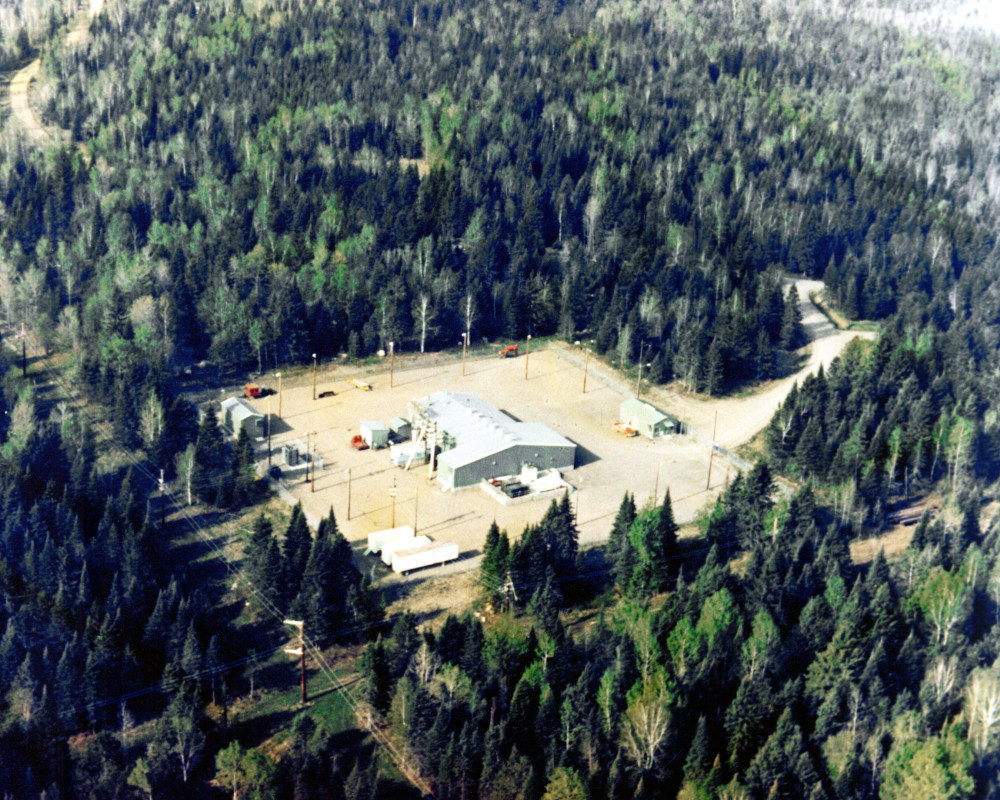China has reportedly constructed a massive extremely low frequency, or ELF, antenna array the size of New York City, as well as a smaller system and associated data processing and signal transmission facilities at various locations throughout the country. Officially, the entire system, known as Project Wireless Electromagnetic Method or Project WEM, will support the Chinese resource extraction industry and provide early warning about potential earthquakes. However, there is significant evidence that its primary function may actually be to provide long-range communication with Chinese submarines, a critical capability to support its growing number of nuclear-armed ballistic missile boats.
The South China Morning Post
provided the update on Project WEM on Dec. 31, 2018. The antenna arrays and other sites have been more than decade in the making, with the program being a major component of China’s 11th Five Year Plan, which began in 2006. However, China has been especially secretive about the project and has not officially disclosed the location of the main array. Available information points to the bulk of Project WEM being situated within the country’s central Huazhong region, according to the Post.
ELF radio waves have a proven ability to penetrate deep below water and the ground. In principle, this means that a huge antenna array could be useful in detecting natural resources underground, such as precious metals or fossil fuels. Mining companies already employ ground-penetrating radar and laser imaging systems for similar purposes.
It might also be possible to use such a system to monitor movement below the Earth’s surface. This, in turn, might provide early indications of impending earthquakes, which are not uncommon in many areas of the country. The deadliest known earthquake of all time occurred in China in the 16th century, killing between 820,000 and 830,000 people based on Ming Dynasty records.

There is very real scholarship on ELF’s application in both of these civilian roles and Chinese researchers have published work on these topics. Project WEM’s funding also came via government budgets for civilian projects, according to the Post.
But, at the same time, there is significant information that suggests that any civilian applications may be of secondary importance to the Chinese government. The ability of ELF radio waves to penetrate hundreds of feet of water has long made them attractive as a way of communicating with submerged submarines.
By comparison, very low frequency, or VLF, waves can only make it down to around 100 feet below water at best. This means that submarines have to get relatively close to the surface or deploy a towed antenna to use these types of communications systems. There is a risk that doing so could give away their position and make them vulnerable to opposing anti-submarine forces.

One of the major benefits of modern submarines, especially nuclear-powered types and boats with advanced, non-nuclear air-independent propulsion systems, is their ability to remain largely hidden underwater for extended periods of time. This gives them inherent deterrent qualities. It also makes them well suited to covertly collecting intelligence or, in the case of subs armed with conventional land attack or nuclear-capable missiles, to quietly positioning themselves for short- or no-notice strikes during a crisis.
So, it’s not necessarily surprising that China’s 724 Research Institute, part of the state-run China Shipbuilding Industry Corporation (CSIC), a major supplier of communications and other electronics to the People’s Liberation Army Navy (PLAN), has been responsible for the Project WEM construction. Lu Jianxun, the project’s chief scientist, is also publicly involved in advanced communications work for the PLAN, the Post reported.

CSIC President Hu Wenmin visited the site in May 2017. He “expressed his appreciation for the construction of the WEM project and put forward opinions and requirements for the follow-up development of the project and the technical application in related fields,” a subsequent statement from the company read.
The Post also published a translated map showing the various components of the Project WEM system, which it said came from the PLAN. In addition to the huge array in central China, there is also reportedly near the county’s South China Sea coastline, which would put it relatively close to the country’s main submarine base on Hainan Island.

“Though I am involved in the project, I have no idea where it is. It should be up and running by now,” Chen Xiaobin, a researcher with the Institute of Geology, China Earthquake Administration, told the Post, indicating a level of security around the project that seems excessive for its stated civilian aims. “This facility will have important military uses if a war breaks out.”
Unfortunately, ELF systems are notoriously inefficient and require large sites in very specific positions to provide any reasonable communications capability. They are also limited in the amount of information they can carry and how fast they can send it out, transmitting text-only messages extremely slowly. Since submarines don’t have the space required for their own ELF transmitters, these one-way alerts often simply tell the boat’s crew to get safely into position to receive actual instructions.
Only three other countries – the United States, Russia, and India – have or have had ELF submarine communications sites. The U.S. Navy shut down the last of its arrays in 2004, officially because they were obsolete in light of improvements to very low frequency, or VLF, communications systems. The Navy’s fleet of 16 E-6B Mercury strategic communications aircraft, together with ground-based VLF stations, presently provide the U.S. military’s core means of communicating with deployed submarines.

The U.S. military still uses VLF waves to transmit so-called “Emergency Action Messages,” a key part of the nuclear strike process, which you can read about in more detail here. The Defense Advanced Research Project Agency (DARPA), the Pentagon’s top research and development arm, among others, has also been exploring the potential for further improved laser- and space-based communication options.
Still, for China, which has the single largest submarine force on the planet, being able to communicate with those boats without them needing to surface or almost surface is essential capability. China had previously built a super low frequency, or SLF, array in 2009 and subsequent demonstrated an initial capability to communicate with submerged submarines over long distances.
ELF offers an additional way to at least alert any boats deep below the sea that there are new orders or other information that they need to receive. It also provides an extremely long-distance communication capability, which will be valuable for the PLAN as it continues working to grow from a regional force into a global one.
More importantly, though, Project WEM could be essential for the Chinese government’s development of its nuclear-armed submarine-launched ballistic missile (SLBM) deterrent capability. In that case, the ability of the ballistic missile submarines, or SSBNs, to remain underwater for long periods of time is vital to shielding them from detection and attack and ensuring they are able to carry out their mission if necessary.
At present, the Chinese military does not have anywhere near the nuclear command and control infrastructure that the United States does in the air and on the ground. One or more large ELF arrays would be a cost-effective means of expanding communications options in the near term with regards to the country’s SSBN force, which is growing in size and scope.
In 2018, information emerged that pointed to China’s submarine-based nuclear deterrent being far more mature than publicly understood. In November 2018, one of the PLAN’s Type 094 Jin-class nuclear ballistic missile submarines reportedly conducted the first test flight of the solid fuel JL-3 submarine-launched ballistic missile, which has an estimated range of close to 5,600 miles. The existing JL-2 can only hit targets around 4,350 miles away.
That same month, satellite imagery appeared to show that the PLAN has four operational Type 094s and may have two more under construction. China has not publicly confirmed how many Jin-class boats it has or is expecting to produce.
“China’s four operational Jin-class SSBNs represent China’s first credible, sea-based nuclear deterrent,” the U.S. military said in the 2018 edition of its annual China Military Power report. “China’s next-generation Type 096 SSBN, reportedly to be armed with the follow-on JL-3 SLBM, will likely begin construction in the early-2020s.”
For any expanded Chinese submarine-based nuclear deterrent force to be credible, it will increasingly require sufficient communications and command and control architecture to go with it. The timeline of Project WEM, which began the same year that the first Type 094 appeared in public satellite imagery, is well in line with the kind of developments one would expect to see. Placing the main array in central China also makes it more difficult for opponents to target it during a crisis.
It remains to be seen whether or not China continues to employ ELF communications in the long run, or ultimately abandons it as the United States has done in favor of other options. But Project WEM that the country is willing to make significant investments in the technology now to improve its ability to communicate with and control its vast and growing submarines forces.
Contact the author: jtrevithickpr@gmail.com
